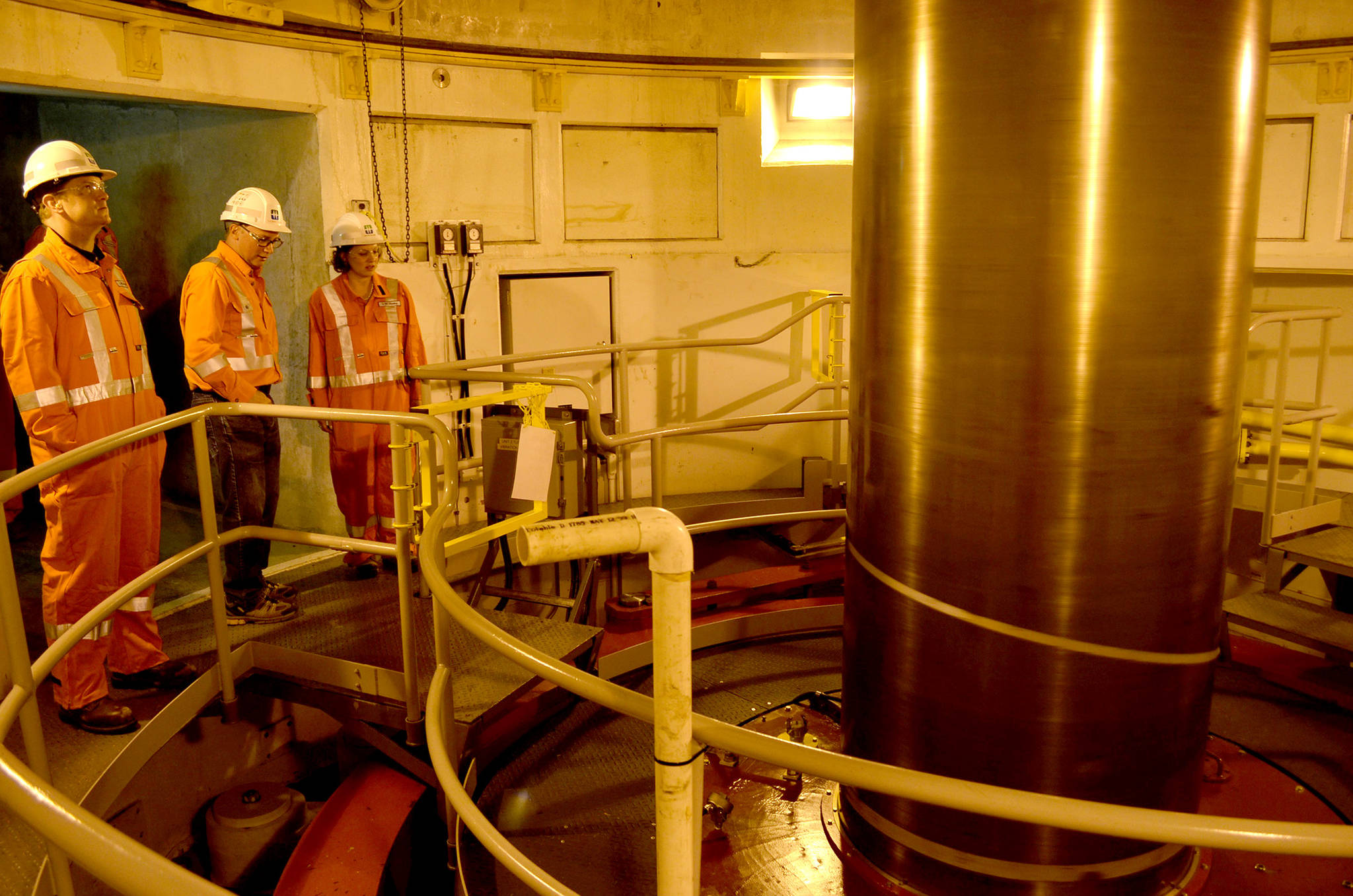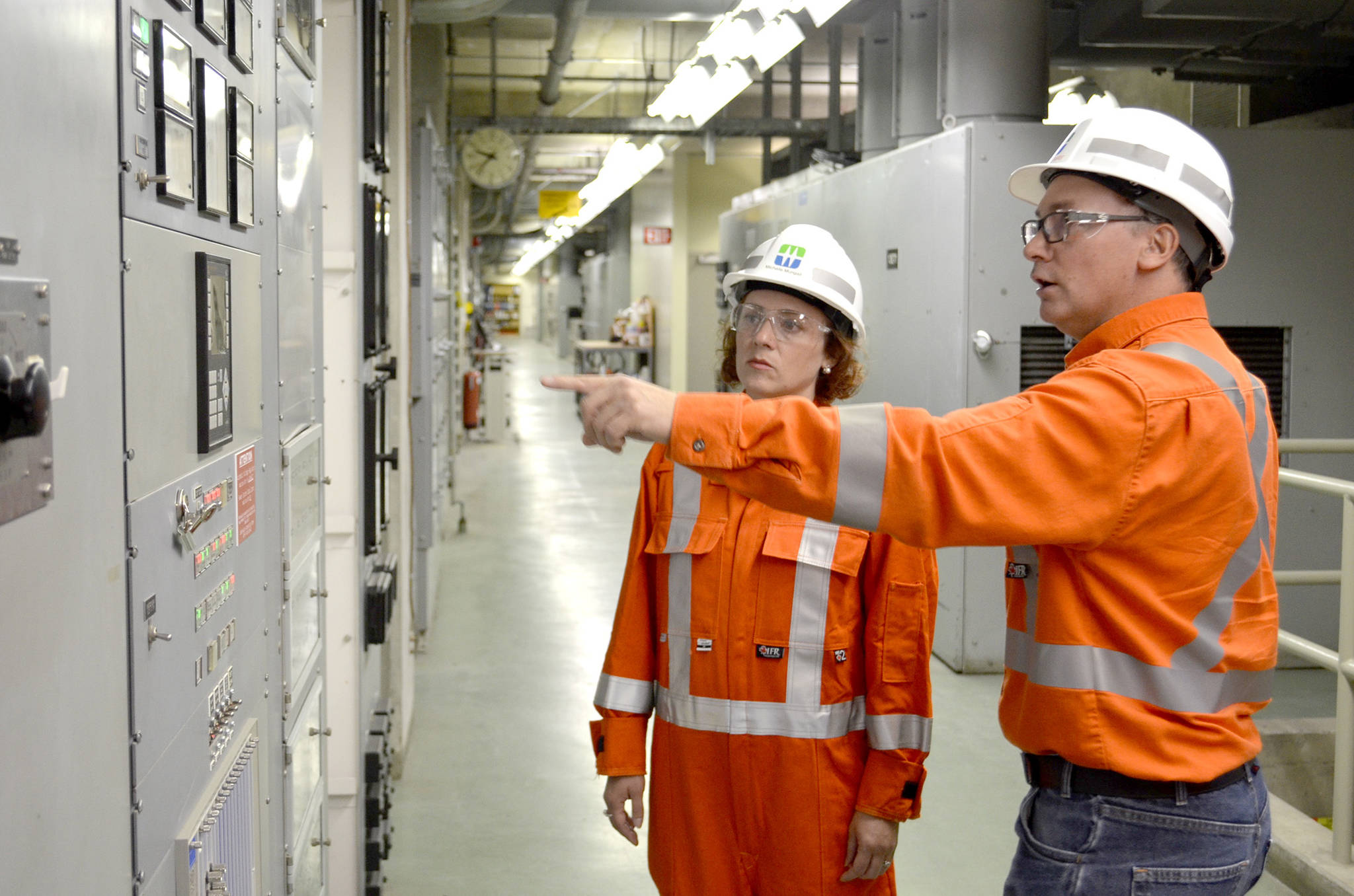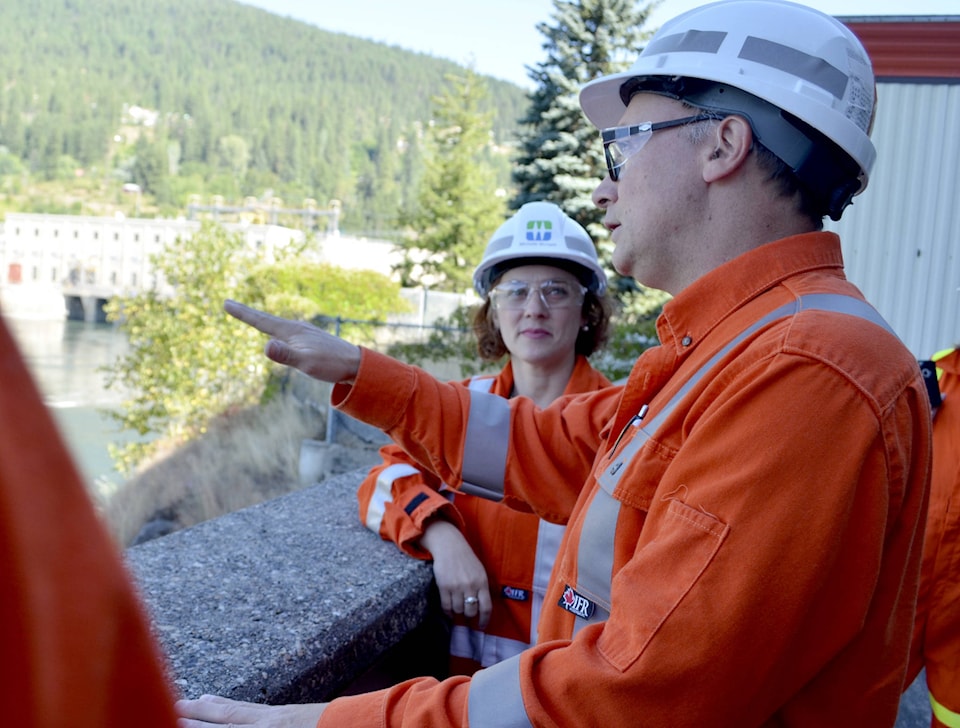Newly minted energy minister Michelle Mungall visited Kootenay Canal on Friday morning, receiving a personal tour from plant manager Thomas Bare, as one of her first acts after being named to Premier John Horgan’s cabinet.
“I wanted to start here in the Kootenays because we generate about 50 per cent of B.C.’s hydro electricity right here in my very own backyard,” Mungall told the Star, following the visit.
“When I was on Nelson city council we did a land annex that brought all these dams and generating stations into the City of Nelson, now I’m finally getting a chance to see how it all works inside.”
The north side of the 4.8-kilometre canal is the longest dam in B.C., and Mungall noted that at peak load it can provide power for 47,000 houses. One of a series of dams governed by the Columbia River Treaty, it’s 19 kilometres downstream of Nelson and receives water from the Corra Linn Dam’s reservoir.
Mungall had previously toured Waneta Dam and Nelson Hydro’s assets with Horgan, but this was her first time at the B.C. Hydro facility. She said the organization will play a key part in helping the province transition to clean, renewable energy.
“This is a significant part of B.C. Hydro’s infrastructure, so this was a great learning opportunity for me to get a better idea of the capital investments, the maintenance involved and everything that goes into turning our lights on and off every day,” she said.
“Talking to people at B.C. Hydro, it’s always apparent the pride they have in what they can do for all of B.C. The electricity isn’t just staying here in the Kootenays and our own communities, it’s also going to Vancouver and wherever else it’s needed.”
The work being done is cutting edge according to B.C. Hydro’s senior vice president Mark Poweska, who accompanied Mungall on the tour before taking her onwards to Hugh Keenlyside Dam and then to the 50th anniversary of the Duncan Dam.
“We’re very happy the minister took the time to learn about us, to meet the people and understand the things we’re doing here,” he said, emphasizing that their facilities will be crucial in helping develop renewable energy infrastructure in the province.
“It’s these sorts of assets that allow us to integrate wind and solar into our systems, because these large assets can store water when the wind’s not blowing and the sun’s not shining. The backbone of a large hydro electric system is key to that.”
He noted that right now 98 per cent of the energy B.C Hydro generates is “clean,” meaning no carbon is being produced.
“Only two per cent of our total production in the province is greenhouse gas emitting, and we’re very proud of that. According to the Climate Action Plan everything has to go up to 100 per cent, so I’m sure the new government will be looking at that and deciding how to move forward.”
He said B.C. is significantly further along than places such as California, where they’ve only successfully reached 30 per cent, so Poweska believes the province has a head start when it comes to going green — a huge priority for the NDP, and for Mungall herself.
“In my mandate letter from Premier Horgan, one of the tasks set out for me is creating a road map for increasing our renewable capacity. We already have so much in B.C. We have reliable supply with hydro-electricity that can backstop an increase in solar, wind, geothermal and other biofuels,” she said, noting she is undaunted by the task.
“This is an exciting time to be in, where we can plan for the future and leave wonderful assets for future generations.”


